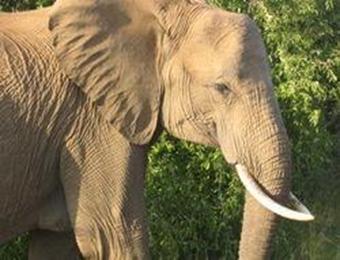


|
Proboscidea:
Proboscidea is an order containing only one family of living animals, Elephantidae, the elephants, with three species (African Bush Elephant, African Forest Elephant, and Asian Elephant). During the period of the last ice age there were more, now extinct species, including a number of species of the elephant-like mammoths and mastodons. Further back in time, in the late Tertiary, there were many more different types, including the bizarre "shovel tuskers" like Platybelodon and Amebelodon. The earliest known proboscidean is Phosphatherium dating from paleocene deposits of Morocco. From the Eocene, several very primitive proboscideans are known, including the african Numidotherium, Barytherium, Moeritherium and the anthracobunidae from the Indo-Pakistanese subcontinent. Origin: Paleontologists know of about 170 fossil species which they classify as belonging to the Proboscidea (Gr. proboskis, elephant's trunk, from pro, before, + boskein, to feed) group. The oldest dates from the early Tertiary period, over 50 million years ago. A discovery in December, 2003 has forced a new estimate of the age of elephant-like species to around 26 million years. Most of these early elephants had four short tusks; two on the upper jaw and two on the lower. Primelephas, the ancestor of mammoths and modern elephants, appeared in the late Miocene epoch, about 7 million years ago. The evolution of the elephant-like animals mainly concerned the proportions of the cranium and jaw and the shape of the tusks and molar teeth.
|
